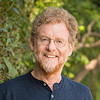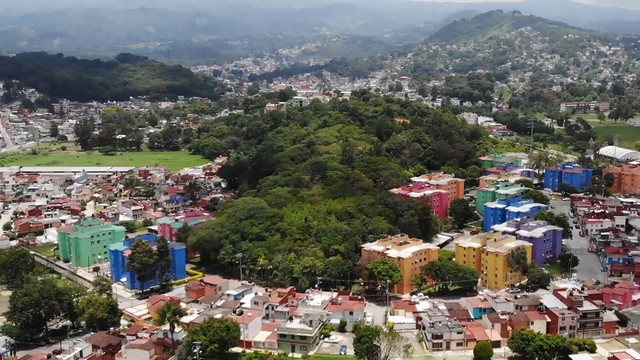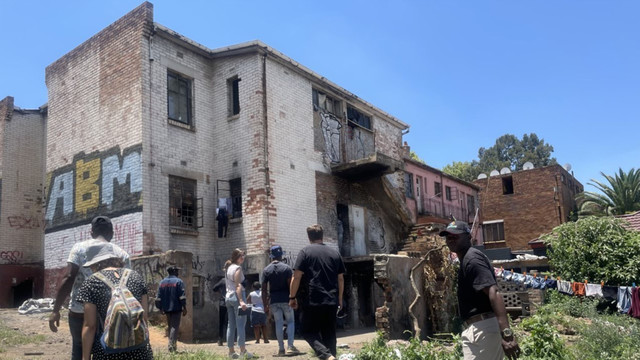Ten essentials for the New Urban Agenda in one page
Ten concise points respond to the current draft of Habitat III's New Urban Agenda which is lengthy, dense and gives too little attention to the key roles of local government and civil society.



Around a billion urban dwellers live in informal settlements such as these. Without far more effective policies, their population could rise to 2 billion by 2030 (Photo: Copyright Mark Edwards)
Habitat III will seek global political commitment to making urban centres more sustainable, inclusive and resilient. But the latest draft of the New Urban Agenda – to be agreed at the summit – is long, impenetrable and gives little attention to urban governance. Frustrated by this unwieldy document, we have developed an alternative version of the New Urban Agenda – in one page.
Borrowing the format of the United Nations Office for Disaster Risk Reduction's Ten Essentials for Making Cities Resilient (PDF) these short and practical points provide national governments with clear direction for a workable outcome from Habitat III.
The text does not include many important goals. It seeks instead to push attention away from long lists that repeat commitments already made to the means by which these can be met.
Ahead of the last negotiation meeting before the summit we share these guidelines and are keen to hear comments.
The 10 essentials
We, representatives of national governments, recognise the two key stakeholders crucial for implementing the New Urban Agenda are urban governments and their local populations whose needs are not met – including representative organisations of slum/shack dwellers. Only with their buy-in will a New Urban Agenda will be effective.
- The New Urban Agenda must support the achievement of the Sustainable Development Goals (SDGs). We commit to supporting urban governments to develop their responses to the SDGs and work with them so no one is left behind. This means shifting attention from defining goals to creating the institutional and governance basis in each locality to meet commitments already made in the SDGs and in the Paris Agreement on climate change
- We recognise how much can be achieved through strong local democracies and organised urban poor groups. We acknowledge a form of governance where local governments work in partnerships with civil society that can be rooted in local needs and possibilities as well as being more accountable and transparent
- We recognise the importance of local leadership for the New Urban Agenda and of learning from the experiences of innovative city governments, mayors and civil society groups – especially those that combine prosperity, good living conditions, and low ecological footprints
- New sources of finance are needed to support local governments and urban poor organisations to meet the SDGs. This includes raising local revenues and national government and international agency support (most international agencies pay little attention to addressing urban poverty)
- We support good local practice such as participatory planning and budgeting, citizen-based monitoring and community-driven upgrading in informal settlements. Importantly, these encourage voice and engagement by groups who face discrimination (for instance on the basis of gender or being a migrant or refugee)
- We commit to improving the quality and coverage of local data so this information is available to all and can inform local governments where needs are concentrated. This includes recognising the capacities of community-driven enumerations and mapping to generate data needed for upgrading informal settlements
- Urban centres need infrastructure and services that reach everyone (so no one is left behind). And that contribute to good health, disaster risk reduction and climate change adaptation (there are many co-benefits between these). Urban centres also need to contribute to climate change mitigation and thus to the realisation of the Paris Agreement and the avoidance of dangerous climate change
- Buildings and infrastructure must be safer and constructed in line with realistic, risk compliant building and land use regulations. But these must be grounded on what is possible and affordable in each location. There is an urgent need in most urban centres to identify safe land sites on which low-income citizens can build and to upgrade informal settlements (and address infrastructure deficits)
- We support investment in risk reduction in urban centres and their surrounds and in the information base it needs to be effective (so data are collected on causes of injuries and premature death and the impacts of small and large disasters). We also commit to preserving the productive and protective services that ecosystems provide for urban centres, especially for water management and flood risk reduction, and
- We agree to develop local government capacity to respond rapidly to disasters, conflicts, shocks or stresses, ensuring that the needs and capacities of the affected population are at the centre of responses.
Key factors influencing the agenda's success
Of course, effective local government depends on supportive national governments and appropriate legislation, rules and regulations – such as planning, health and safety, building standards, disaster risk reduction, climate change – and systems of devolved finance. It often depends on metropolitan or regional systems through which local governments can work together on the 10 essentials.
There is also an urgent need to generate new employment and income streams and what the SDGs describe as 'decent work' particularly for youth. But the SDGs say little about how.
Most local governments have limited capacities to directly expand employment, but much of what is outlined above (and the building of low carbon urban economies) will generate many new jobs including from the private sector and widen opportunities for young people.
David Satterthwaite (david.satterthwaite@iied.org) is a senior fellow in IIED's Human Settlements research group; Cassidy Johnson (cassidy.johnson@ucl.ac.uk) is a senior lecturer at the Bartlett Development Planning Unit, University College London. She also chairs the Urban Planning Advisory Group, which advises UNISDR on issues related to urban development and planning.



